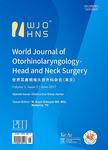Isolated traumatic orbital floor fracture: An analysis of the National Trauma Data Bank
Isolated traumatic orbital floor fracture: An analysis of the National Trauma Data Bank作者机构:Department of Otorhinolaryngology Head and Neck Surgery University of Pennsylvania Philadelphia Pennsylvania USA Perelman School of Medicine at the University of Pennsylvania Philadelphia Pennsylvania USA Leonard Davis Institute of Health Economics University of Pennsylvania Philadelphia Pennsylvania USA
出 版 物:《世界耳鼻咽喉头颈外科杂志英文版》 (World Journal of Otorhinolaryngology - Head and Neck Surgery)
年 卷 期:2024年第10卷第3期
页 面:187-192页
学科分类:1002[医学-临床医学] 100212[医学-眼科学] 10[医学]
基 金:None
主 题:epidemiology National Trauma Data Bank orbital fracture risk factors trauma
摘 要:Objectives: To date, no study provides a comprehensive analysis of traumatic orbital floor fractures across the United States. We aimed to characterize patient demographics, injury-related variables, and operative management in this ***: The National Trauma Data Bank was queried for open or closed orbital floor fractures from 2008 to 2016. Clinical data were ***: Overall, 148,592 orbital floor fractures were identified, with 142,577 (95.9%) closed- and 6158 (4.1%) open-type fractures. A total of 106,243 (71.5%) patients were male and the median patient age was 41 years. The majority of patients (79.2%) had abbreviated injury scale scores of ≤2, indicating minor/moderate injury. Fracture mechanism of injury (MOI) differed by gender, with the most frequent being unarmed fights in men (34.3%) and falls in women (14.0%). There were 29,600 patients (19.9%) with isolated orbital floor (I-OF) fractures. The MOI most strongly associated with operative intervention of with I-OF fractures were penetrating injuries caused by a firearm (odds ratio [OR]: 2.91; 95%confidence interval [CI]: 1.62–5.20) and cuttings/piercings (OR: 2.17; 95%CI: 1.29–3.65).Conclusion: This large epidemiological study reveals that orbital floor fractures tend to present with minor or moderate injuries and are more likely to require operative intervention in setting of firearm or cut/pierce injuries.



